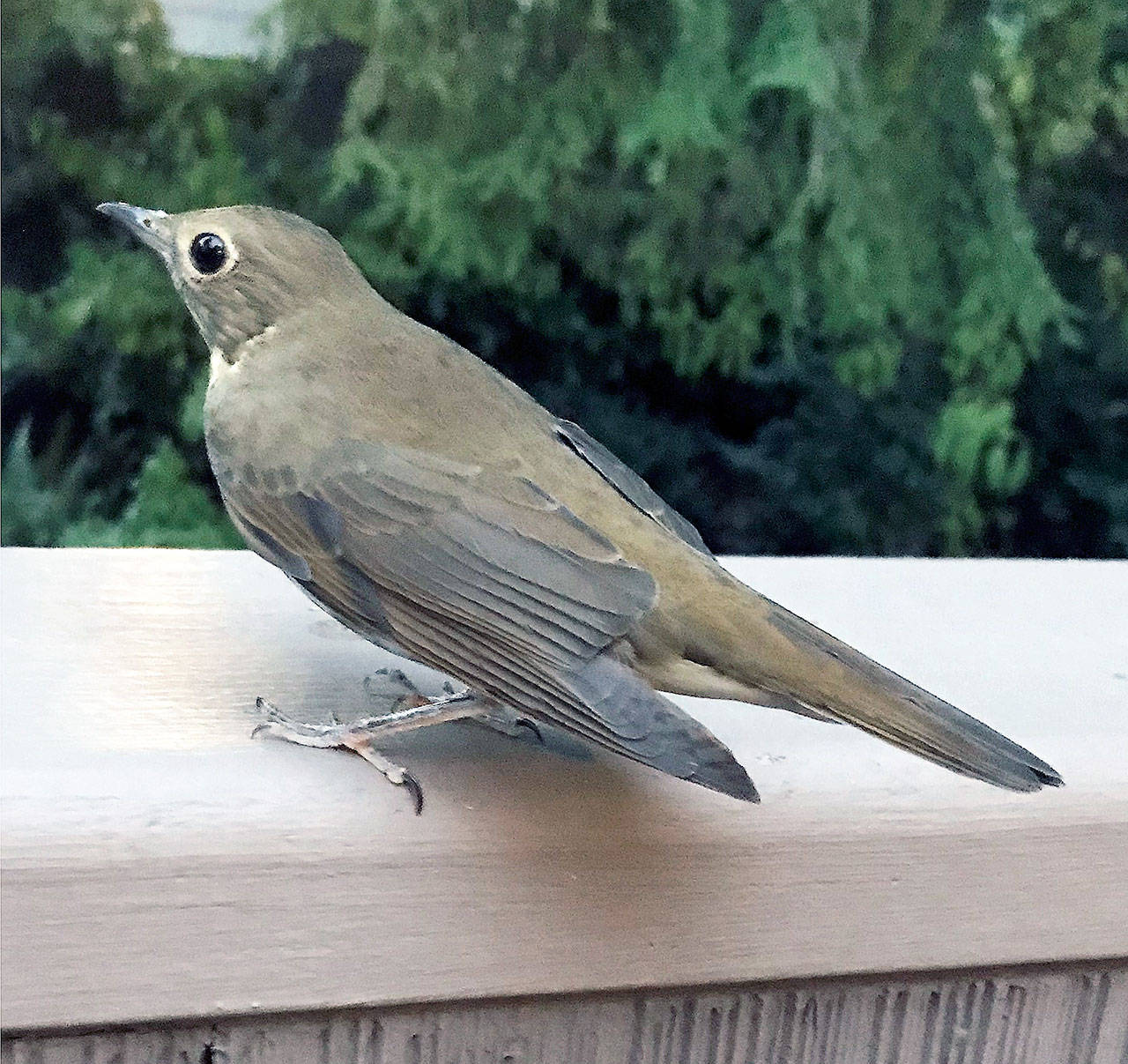By Dianna Moore
Grays Harbor Audubon Society
It seems only fitting that the last of the “summer birds” would be the one I usually think of as being the first to sing for our summer listening pleasure, and I am not the only one who listens for their distinctive call. It is a beautiful spiraling-up sort of song and more than makes up for the lack of visuals on this bird. We seldom see it but have no problem ID-ing the Swainson’s Thrush by this sweet, haunting song. Check out the following link to hear it (birdweb.org/birdweb/bird/swainsons_thrush click on ‘Listen’). The photo was taken by a friend, Caryn Schutzler, after the bird hit her window and sat recovering from the blow. It flew off shortly after this was taken.
General Description: The Swainson’s Thrush is one of three spot-breasted thrushes found in the state of Washington. All are similar in size and appearance, but the Swainson’s has the distinct buff-colored eye ring to help correctly I.D. this bird. They range from 6.3 to 7.5 inches in length, with a wing span of 11.4 to 12.2 inches, and weigh approximately 0.8 to 1.6 ounces. Their back is a medium brown with a light-colored breast dotted with faded brown spots. The head appears rounded and the bill is straight.
Habitat: This is a bird of the forest, especially dense alder stands with streams, just exactly what we have a lot of here in Grays Harbor. They prefer to nest in thickets of berry bushes and salal, and often choose a mix of deciduous and coniferous forest.
Behavior: Swainson’s Thrush are shy and reclusive birds, usually not seen due to their dark colors and dark habitat but only heard. During spring and summer they spend most of their time on or near the ground feeding on insects and arthropods. But they spend more time gleaning prey from trees than other spot-breasted thrushes, and hovering while hunting insects in mid-air. As the season progresses, they eat more berries, so look for them beginning to move higher off the ground and into low branches for tree fruit.
Diet: Berries are the first choice year-round, so these birds spend most of the summer taking advantage of all the different varieties we have on the Harbor. They make up about one-third of the summer diet. Insects are the main source for protein.
Nesting: The male establishes the territory then sings to attract a female. She builds a nest over a four-day period, using fine twigs, grass, moss, and shredded bark, and lined with shredded leaves, rootlets, animal hair, lichens or moss. The female incubates three to four eggs by herself for, then both parents feed the young which leave the nest 10 to 14 days after hatching.
Migration: Swainson’s Thrushes do not over-winter in Washington, but migrate to tropical forests. They leave as early as August and September flying south at night and are back in eastern Washington in May.
Conservation Status: Swainson’s Thrush have done very well in western Washington because the logging leaves behind brushy, early successional habitat, perfect for this reclusive bird. They are still vulnerable to loss of habitat on their wintering and breeding grounds. But for now they are the most abundant and widely distributed of the spot-breasted thrush in this state.
When and Where to Find in Grays Harbor: Swainson’s Thrush are fairly easy to hear throughout Grays Harbor, but only during the summer, usually June, July, and August. So add it to your list of birds to watch for next year, and make sure you are familiar with their haunting call. You will be glad to welcome them back for the summer.


